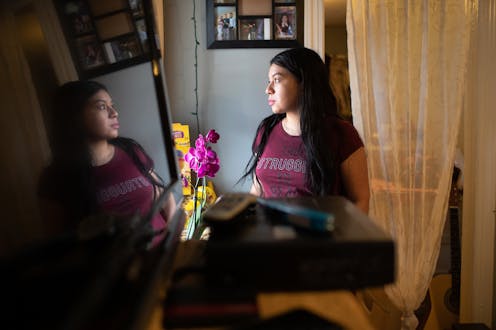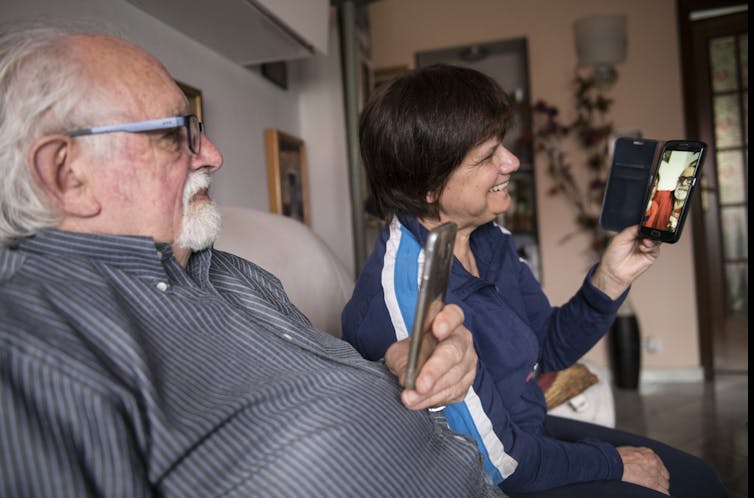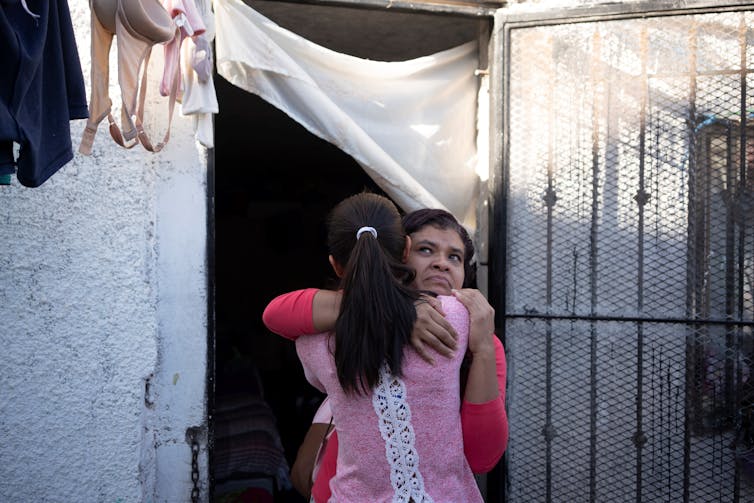4 tips for staying connected during coronavirus, from migrants who live far from family
What international families can teach the rest of us about sustaining long-distance relationships.

As social distancing and shelter-in-place orders are implemented to curb the spread of coronavirus, ever more people worldwide are separated from relatives, friends and loved ones. As of March 29, an estimated 229 million Americans, 60 million Italians and 1.3 billion Indians have been asked to stay home.
Forced separation, while new to most, is a fact of life for the world’s migrants. Still, many sustain close relationships with relatives through years, even decades, of physical distance.
As a linguistic anthropologist interested in the power of everyday language, I study how such families maintain relationships by analyzing recordings of their conversations. I worked with migrant families living stretched between El Salvador and the United States to record 75 hours of these conversations over four months.
I’ve identified four communication strategies of long-distance families that may help people in coronavirus-related isolation cope with physical separation and maintain social connection.
1. Nothing beats a good phone call
As millions more people rely on video-conferencing technology, they’re discovering what migrant families have long known: Video communication can be draining – physically, mentally and emotionally.

For work-related video conferencing, the challenges include preparing yourself and your immediate surroundings for broadcast. For families, studies show, seeing those you love on video can make feelings of separation more intense, increasing the yearning to be together.
Text messages and other written communication, on the other hand, can feel too impersonal and may not be accessible to those – like young children – who can’t read, or to people with visual impairments.
That’s why the families in my research rely on phone calls for almost all of their communication. Calls are intimate. Hearing a loved one’s voice can convey emotions without the constant visual reminders of separation.
2. Communicate to connect
Communication isn’t just about conveying information – it’s also a way of caring for others. The long-distance families I study use small acts of communication to reinforce their intimate bonds.
Take greetings, for instance. In the phone calls I have analyzed, greetings almost always sound something like this: “I send greetings to you, to my grandchildren, to my daughter-in-law and to all those who surround you.”
Such elaborated greetings articulate family relationships that stretch across space. They are an instance of the everyday ritual that linguistic anthropologists have shown to be powerful communicative tools in societies around the world.
As migrant families speak these greetings over and over, in every conversation, they continually create and re-create connections despite distance. That’s because communication has consequences beyond the moment in which it happens. Research shows that migrant families are aware of how the effects of conversations accumulate over time.
3) Manage conflict carefully
These long-distance relatives have also developed strategies for communicating about conflict, which is inevitable in any family, and minimizing its consequences.
By and large, the conversations I analyzed avoid explicit disagreement and signal concerns in subtle ways.
For instance, if relatives in El Salvador don’t have enough money to cover their day-to-day costs, they embed indirect complaints as they recount family news. A story of their father’s visit to the doctor, for instance, will include a quote from him lamenting that he cannot afford his new prescription.
This communication strategy puts family problems on the table for discussion without placing blame.
4) Celebrate the past – and a future together
Communication has the ability to span not just distance but time.
The migrant families I study often reminisce about times when they lived together, recalling humorous incidents or past mishaps that lead to shared laughter. This isn’t just nostalgia: Separated relatives leverage these shared memories to imagine what it might be like to live together again.
For example, two sisters talk about how they once shared household tasks, using these memories to imagine a scenario in which the migrant sister could play with the young niece she’s never met.
The future is uncertain for migrant families. Many hope and plan to be together again, but restrictive immigration policies often prevent relatives from reuniting or even visiting each other.

For those locked down by coronavirus, the isolation should end in weeks or months. In the meantime, thoughtful communication can help sustain long-distance relationships.
And even after this crisis passes, I hope these lessons from migrant families will continue to enrich conversation and deepen social connections.
[Insight, in your inbox each day. You can get it with The Conversation’s email newsletter.]
Lynnette Arnold does not work for, consult, own shares in or receive funding from any company or organization that would benefit from this article, and has disclosed no relevant affiliations beyond their academic appointment.
Read These Next
How the ‘slayer rule’ might play a role in determining who will inherit wealth from Rob Reiner and h
These rules have a long history in the United States. They played a role in the notorious murders by…
The celibate, dancing Shakers were once seen as a threat to society – 250 years later, they’re part
‘The Testament of Ann Lee,’ Mona Fastvold’s 2025 film, depicts part of the long history of Shaker…
As DOJ begins to release Epstein files, his many victims deserve more attention than the powerful me
Powerful men connected to Jeffrey Epstein are named, dissected and speculated about. The survivors,…






